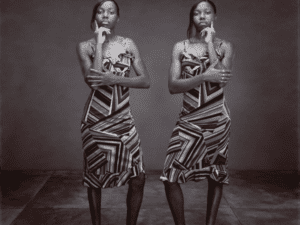“Love happens here” is a phrase that can easily be found across London this summer. Most shops, bars and restaurants are affectionately decorated with rainbow paraphernalia to commemorate 50 years since England and Wales decriminalised homosexuality. Joining the ongoing programme, alongside institutions such as the BFI and Tate, is The Photographers’ Gallery who show their solidarity with an offsite exhibition, the title of which appropriately is aligned with the existing celebrations.
Acting on behalf of the Mayor of London, and with the generous aid of organisations such as creative commons, Curator Karen McQuaid and her team have been able to direct every angle of the exhibition to demonstrate the full influential scope of its participants. Details such as promotional graphics and font-types have been executed with a respectful consideration. For example, the presence of artist, activist and creator of the gay pride emblem, Gilbert Baker, who passed earlier this year, courses throughout the display through the “Gilbert” type face.
Many contributors and attendees will remember a tradition of artistic ability having been, on occasion, taken by the general public to be indicative of particular sexual preferences. Whilst these generalised conventions are mostly reductive, there is a dynamic connection between the arts and identity, something positively and sensitively conveyed within the show. Throughout history, the industry has acted as a haven for those needing a safe means of self-expression. It is thus not surprising that the LGBTIQI community is a significant and loyal constituent in the continuing narrative of the visual arts.
The chosen works follow the decades that preceded the introduction of the progressive legislation, mapping landmarks in the growing acceptance of the movement. In the diverse compositions, protest is found to take many forms. Aggression however, is found to be a rare participant in the defence of love. Featured photographer Tania Olive sees strength in a passive resistance; her subjects stand motionless yet defiant in the wake of the challenging title notion: Dyke of our time. Sunil Gupta’s arrangements balance coloured photographs of anonymous modest couples with cropped monochrome shots documenting protests against “Clause 28.” The contrasted images are separated by the poetry of the artist’s former partner and act as a reminder that the capacity for love lacks prejudice. The juxtaposition posed provides the platform on which her binaries – both conceptually and stylistically- can be rewritten
The gallery is a key component in the festivities as it represents a duality of purpose. It acts as both a tangible documentation of the fundamental theme, whilst also inhabiting the capacity for liberated demonstration. By surveying a diverse collection of British photographers, including those whose practice is ongoing, the audience is not only reminded of how far we have come but the progress that is still left to be made.
Love Happens Here runs until 28 July. For more information: www.thephotographersgallery.org.uk
Credits:
1. Ian David Baker, Pride 1980, Courtesy the artist.





